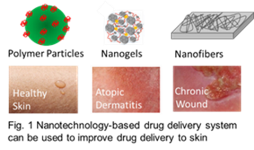
Fiorenza Rancan
Charité – Universitätsmedizin Berlin, Germany
Title: Drug delivery to skin by nanotechnology-based drug delivery systems
Biography
Biography: Fiorenza Rancan
Abstract
To overcome the sophisticated cutaneous barrier is one of the main issues of drug delivery to the skin. The stratum corneum can block microorganisms, particulate materials, and bulky molecules. In skin inflammatory diseases, where the stratum corneum is impaired, penetration of drugs is hindered by the component of the viable skin layers such as the tight junctions in the stratum granulosum. Even if the epidermis is missing, like in case of wounds, collage bundles in the dermis delay the penetration and diffusion of drugs. Nanotechnology-based delivery systems like thermoresponsive polyglycerol-based nanogels (tNGs) or nanowires have been shown to be valuable tools for selective and sustained release of drugs to skin. Recently, we used tNG to deliver tacrolimus (TAC), a high molecular weight poorly penetrating skin drug. We compared the particle-based formulation with the commercial formulation (Protopic 0.1%) using breast and abdominal ex vivo skin. Different methods for skin barrier disruption were used in order to investigate tNG skin penetration and drug release in skin with compromised barrier. The amount of penetrated TAC was measured in skin extracts by liquid chromatography–mass spectroscopy/mass spectroscopy (LC–MS/MS), whereas effects on skin inflammatory mediators (IL-6 and IL-8) were detected by means of ELISA. In another study we used polylactic-co-glycolic acid (PLGA) particles, as well as PVP-based nanofibers to deliver the antimicrobial drug ciprofloxacin to a wound model based on ex vivo human skin. The results showed that nanocarriers help to deliver drugs across the stratum corneum to the target skin regions. Different drug delivery profiles could be achieved depending on the delivery system. We conclude that nanotechnology offers promising alternatives to conventional drug formulations.


